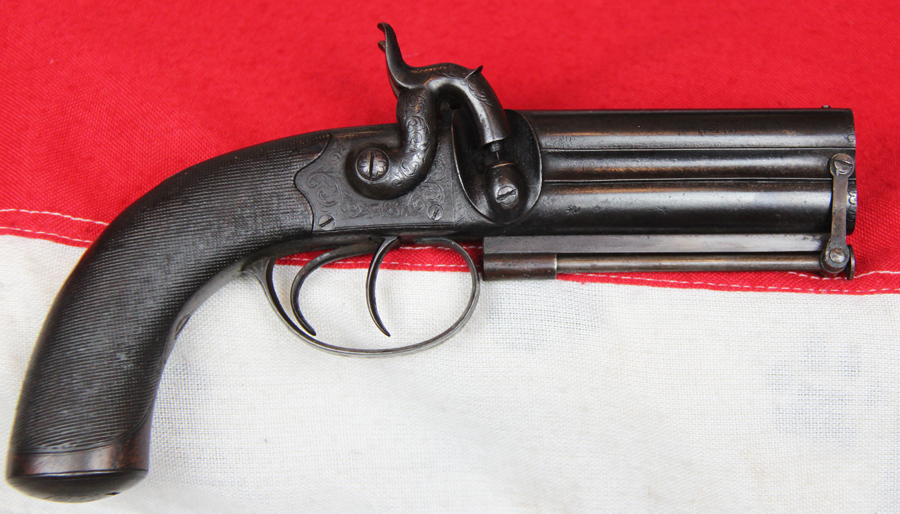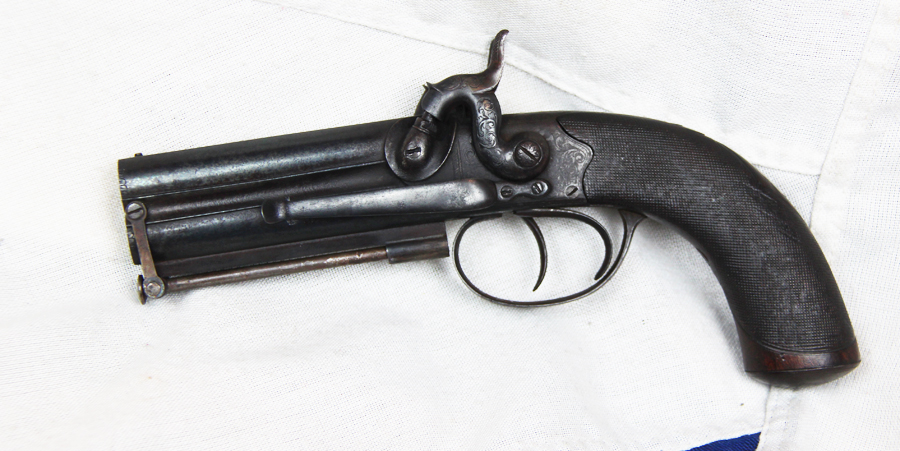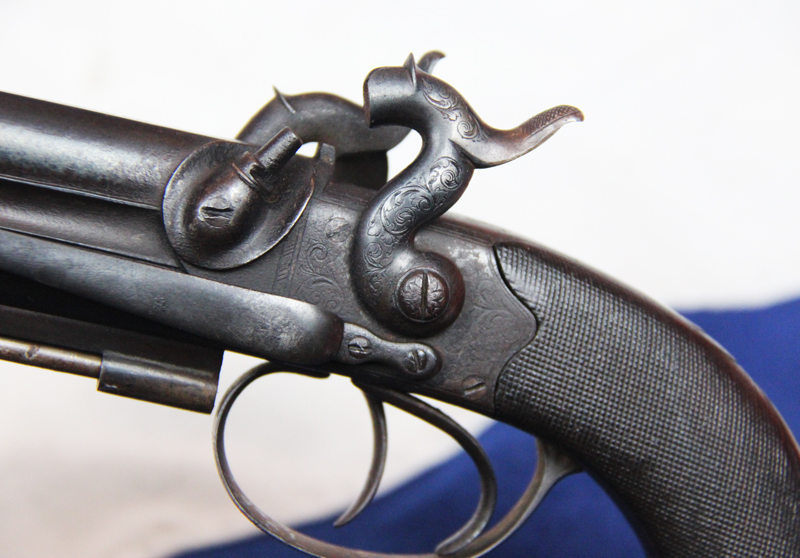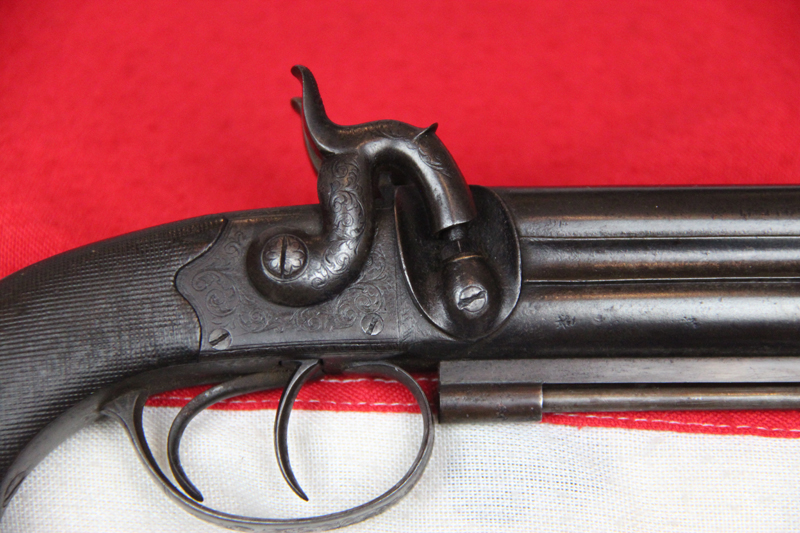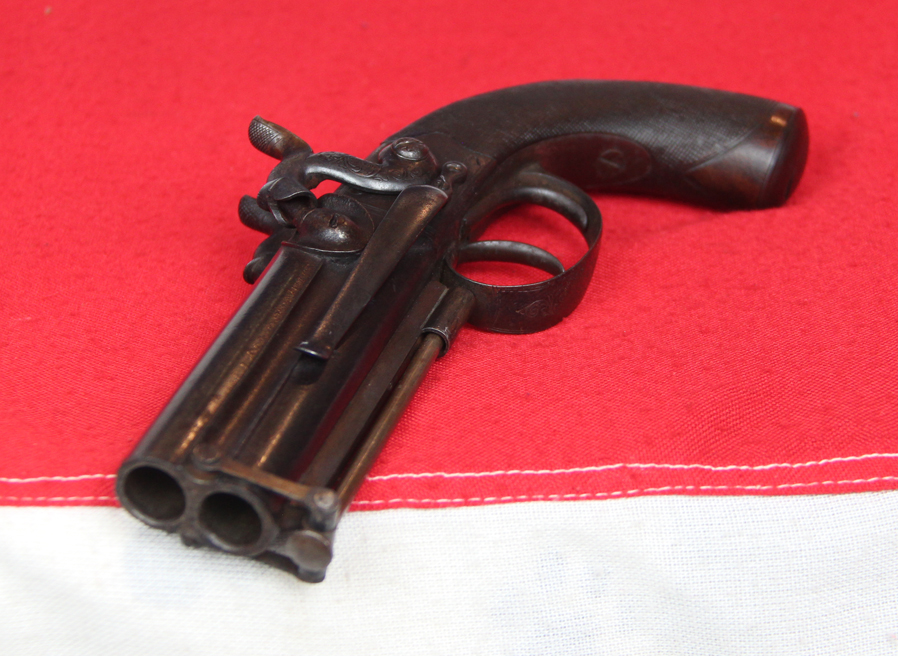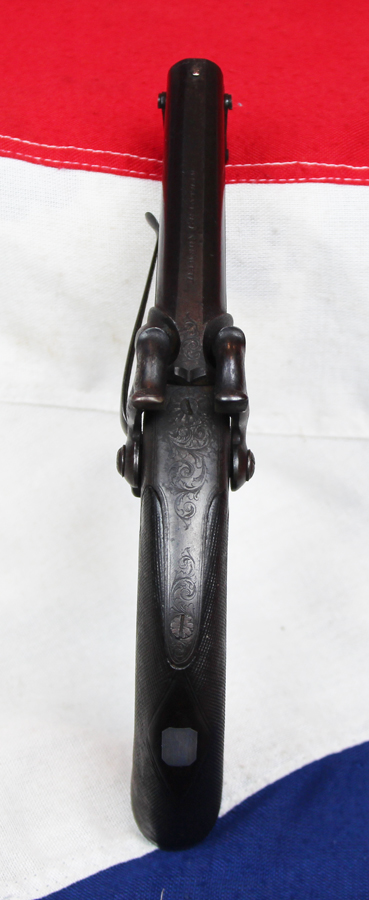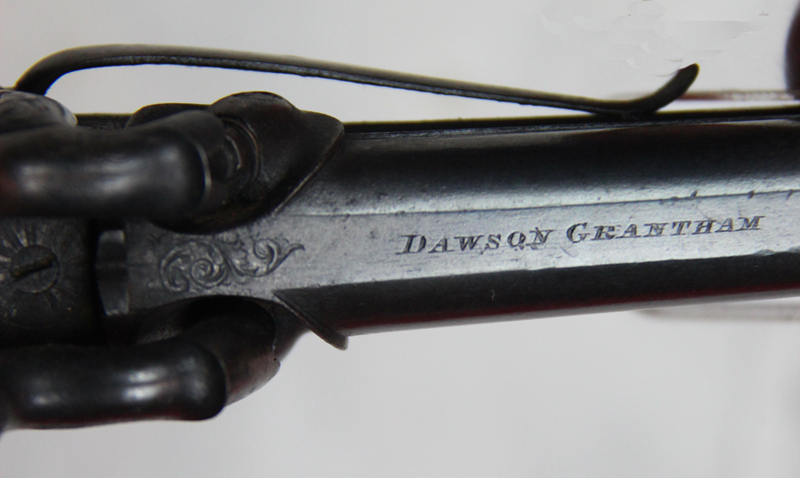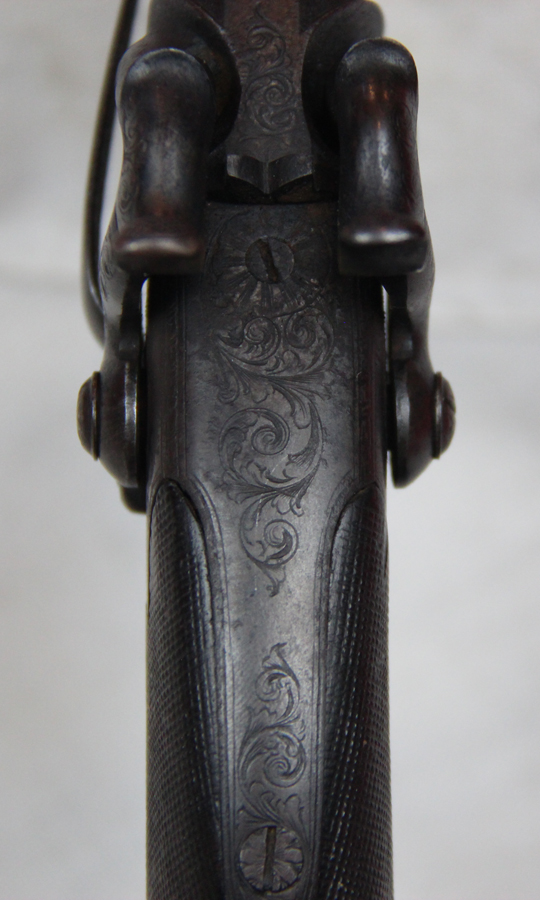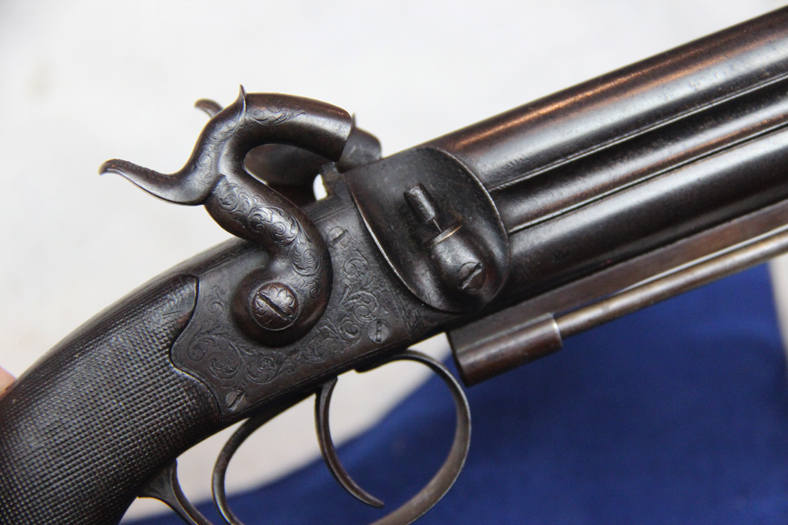A Superb and Beautiful, Original Antique Victorian Over and Under English Percussion Belt Pistol
Early Victorian double barrelled pistol, made circa 1840. With a large calibre pair of barrels and a very nicely engraved frame, with micro chequered walnut grip inset with a lozenge shaped silver escutcheon, a hinged butt trap percussion cap box, and good left side belt hook. A very tight and crisp twin trigger twin action. Nice blue patination overall. Made by Dawson of Lincolnshire. Captive swivel ramrod. The percussion cap, introduced circa 1820, is a type of single-use ignition device used on muzzleloader firearms that enabled them to fire reliably in any weather condition. This crucial invention gave rise to the caplock or percussion lock system. This early system coined "Percussion Lock" operated in a near identical fashion to flintlock firearms and used fulminating primer made of fulminate of mercury, chlorate of potash, sulphur and charcoal, ignited by concussion. It was an invention born of necessity; Rev. Forsyth had noticed that sitting birds would startle when smoke puffed from the powder pan of his flintlock shotgun, giving them sufficient warning to escape the shot. His invention of a fulminate-primed firing mechanism deprived the birds of their early warning, by avoiding the initial puff of smoke from the flintlock powder pan and shortening the interval between the trigger pull and the shot leaving the muzzle.
Fulminate-primed guns were also less likely to misfire than flintlocks; it was not until after Forsyth's patents expired that the conventional percussion cap system was developed. The percussion cap helped lead to the self-contained cartridge, where the bullet is held in by the casing, the casing is filled with gunpowder and a primer is at the end.
Before this development, firearms used flintlock ignition systems that produced flint-on-steel sparks to ignite a pan of priming powder and thereby fire the gun's main powder charge (the flintlock mechanism replaced older ignition systems such as the matchlock and wheellock). Flintlocks were prone to misfire in wet weather, and many flintlock firearms were later converted to the more reliable percussion system. As with all our antique guns, no license is required as they are all unrestricted antique collectables
Code: 22845
1295.00 GBP

